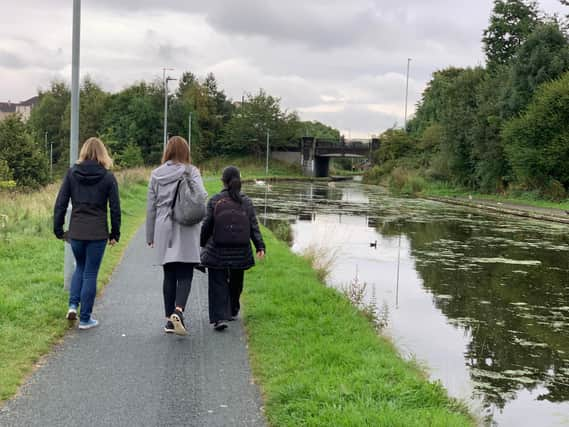We can ‘evaporate’ traffic in our neighbourhoods by backing active travel plans - May East


Active travel provides multiple benefits to individuals and to society. It delivers significant health benefits, deepens sense of place, enhances local economy, promotes traffic evaporation, improves air quality, and decreases carbon emissions.
The pandemic has reshaped movement in cities in myriad ways, with an increase in the number of people turning to walking and cycling for discovery, transportation and exercise. We have seen a surge of traffic evaporation and many cities are taking the opportunity to reallocate road space from private vehicles to a combination of active travel, public space and public transportation.
Advertisement
Hide AdAdvertisement
Hide AdWhile traffic evaporation has been well-documented and researched for over 20 years, decision--makers are still under the impression that reducing car lanes will make traffic worse. This fear is firmly refuted by a study conducted by the EU, which found that the experience in a number of European cities was that after an initial period of adjustment, some of the traffic that was previously found in the vicinity of the scheme ‘evaporates’. This was due to drivers changing their travel behaviour and, as a result, the urban environment becomes more liveable in many respects.
I have been conducting walking interviews with women in three Scottish cities to discuss their experience of moving with purpose through the city and their role in promoting a traffic evaporation mentality, whereby cities create public transport corridors, segregated cycle lanes and improve safety measures such as lighting, proper pavements and dropped kerbs.
Women have specific travel patterns such as trip-chaining or the need for making multiple stops for the purpose of transporting children, running errands, grocery shopping, and work-related activities. They also have different interests in body, mind and spirit, and the need for nurturing spaces and places for socialising.
For the majority of the women interviewed, to walk in the city is to negotiate space with cars and cyclists. In many European cities, people and cyclists come first, cars come second; while according to participants in my research, Scottish cities remain dominated by cars. We need a change of culture. Part of this change needs political buy-in, where public transport becomes more connected, frequent, and access-egress-transfer schemes within one hour are put in place. In short, active travel must be the goal of any sustainable urban policy.
Michel De Certeau, the French psychoanalyst and philosopher, argued that pedestrians transform the street from a place that is geometrically defined by urban planning, into a space that is useful or pleasurable for them. A participant suggested the creation of a network of meandering fresh air routes within the neighbourhood with no cars or limited car access, and with ample space for walking, cycling, prams, wheelchairs, and mobility scooters. While fresh air routes should be mapped, promoted and used, ‘toxic routes’ need to be greened or evaporated. This view highlights that drivers could be convinced to walk instead of driving, if important destinations covered within walking distance could be reached safely, in comfort and in soul-infusing ways.
James Lovelock, an independent scientist and co-originator of the Gaia hypothesis, once claimed the best way to get to know the living planet is by walking. Promoting active travel is a cornerstone to meet net zero carbon targets, but also to deepen our relationship with place, to support local independent shops, to strengthen the sense of community, and collectively chart new directions. The Tibetan Buddhist Teacher Tai Situ Rinpoche says when enough people think and act in similar ways, the effect of those actions is amplified. This dynamic can be referred to as cumulative action or collective action, or even the Gladwell tipping point.
We can make sure 2022 is a year where we walk more miles, cycle stimulating routes to destinations interwoven with natural corridors and linked to relevant public transportation - or call on our councils to provide such routes where they have yet to materialise! - and through doing so, intentionally evaporate traffic in our neighbourhoods.
May East, UN House Scotland Director of Cities Programme
Comments
Want to join the conversation? Please or to comment on this article.